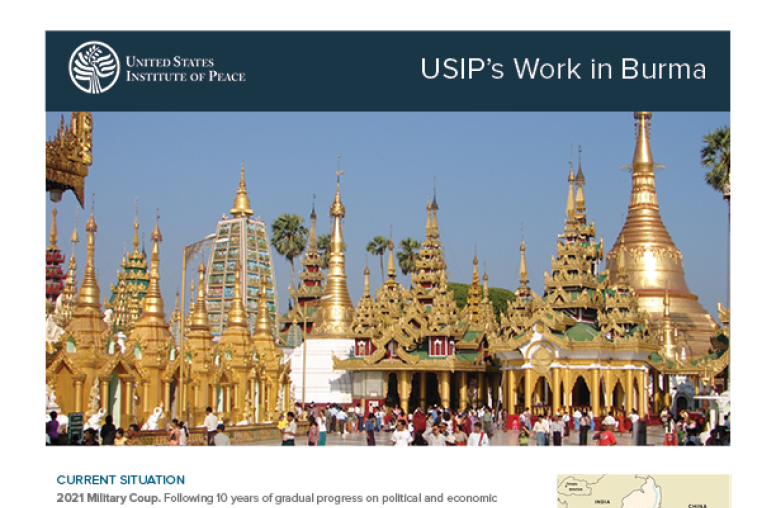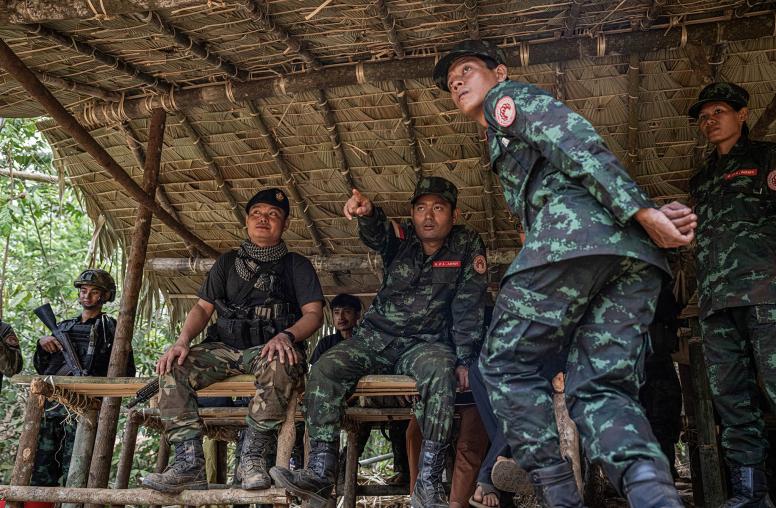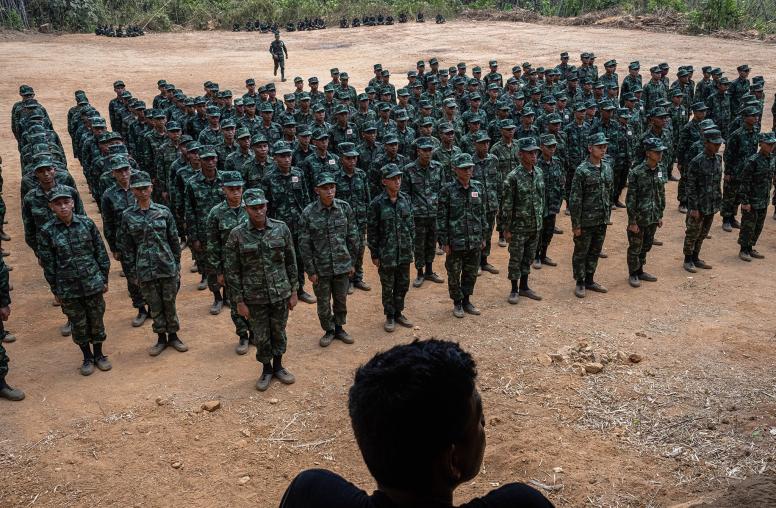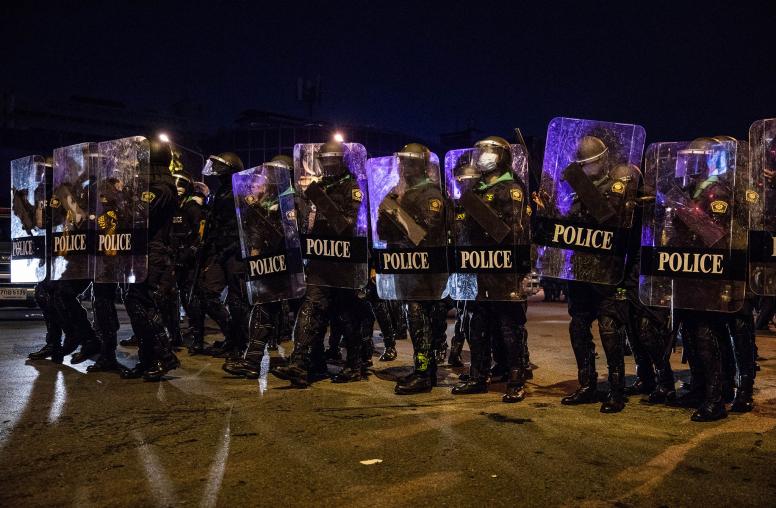
Last April, when I began planning my trip to Burma to assess the status of the civil society peacebuilding, community-led efforts to advance inter-religious coexistence, and the role of religious leaders in this work, I had no idea how significant the timing of my trip would be.
At the time, the images conjured when I thought of Burma’s religious sector’s participation in advancing peace and justice were those from the 2007 “Saffron Revolution:” the mass mobilization of Buddhist monks and nuns throughout the country in protest of the junta’s economic policies and their painful impact on Burma’s civilians. In the aftermath of those extraordinary protests, marked by the images of monks and nuns lining up at the gate of Aung San Suu Kyi’s house, their ritual condemnation of military leaders, as well as the violent response of the government, I reflected on the powerful roles of religious symbols, institutions, and actors in the protests. Indeed, some might argue that one can draw a line between the current dramatic reforms taking place in Burma and the power of those protests (combined, of course, with many other factors both domestic and geopolitical).
In June of this year, however, new images emerged. This time, the images were of violent events in Rakhine State between Rohingya Muslims and Rakhine Buddhists. In response to the violent attacks between the two communities, Buddhist monks and Muslim religious leaders were shown condemning one another. In Rangoon and Mandalay, monks took to the streets, a haunting reminder of their 2007 mobilization. This time, however, their cause was to demonstrate their opposition to granting legal status to Rohingya.
In August, when I traveled in Rangoon, Mandalay, and Myitkyina over 10 days, the situation in Rakhine State was primary on people’s minds. Across the board, all those with whom I met rejected the notion that the situation in Rakhine State was a religious conflict. Instead, they pointed to its root political and economic drivers. Yet they also feared that the religious dynamic had the potential to escalate and spread the violence and ultimately to slow the reform process. Many called for greater efforts to bridge religious communities, to promote collaboration between them to address Burma’s challenges, and to protect and preserve peaceful religious coexistence. In Mandalay and Rangoon, I met with inter-religious groups of clergy and lay people seeking to do just this. In Kachin State, where war continues, I learned about Burmese Buddhist monks who had traveled from Mandalay to provide relief and show solidarity with the victims of violence, reaching across lines of ethnic and religious difference.
As those who have traveled to Burma can attest, its religious sector is very impressive. In the absence of adequate government services over recent decades, the religious sector has stepped up to fill the gap: providing health services, alternative school systems, and humanitarian relief to the population. Their understanding of community needs and their ability to organize, mobilize, and respond to those needs is significant. It is my prayer that as Burma continues to move forward, the religious sector will continue to use its powerful capacity to unite its myriad communities and to advance peace. Throughout the next year, USIP will provide ongoing support to Burma’s religious sector to meet these objectives.



